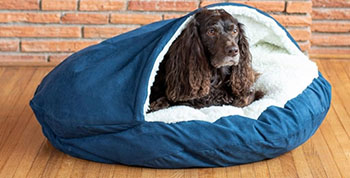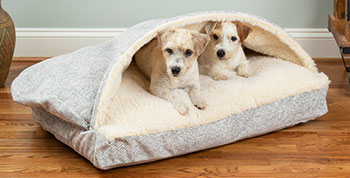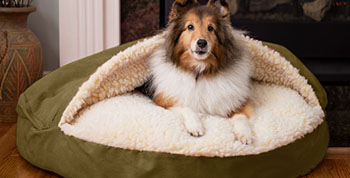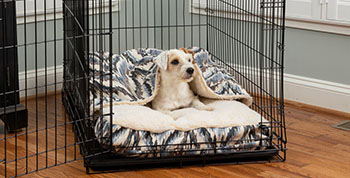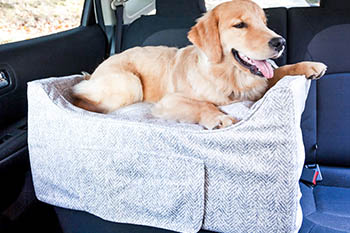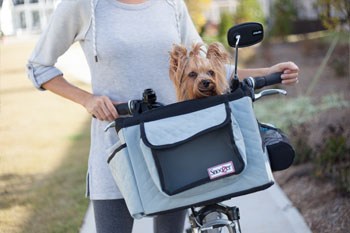Can dogs have bad dreams?
The short answer is that we don’t know for sure. There’s no way for researchers to determine exactly what dogs dream about when they dream, and of course our dogs can’t tell us.
But the long answer is probably yes. Here’s why.
What we know about dreaming in dogs
A dog’s sleep cycle lasts around 20 minutes, just a few minutes of which are spent in rapid-eye movement (REM) sleep. This is the phase of sleep where the majority of dreaming occurs. It’s during this phase of sleep that you’re most likely to see your dog pawing the air, twitching their nose, and maybe even making noises. It certainly looks like they’re dreaming and partially acting it out.
Just because an animal goes through an REM phase doesn’t necessarily mean they dream, though. However, there is strong evidence they do.
Evidence of acting out dreams
Some of the strongest evidence comes from studies on cats conducted by Michel Jouvet of the School of Medicine in Lyon, France, in the 1960s. In his study, the part of the brainstem responsible for inhibiting movement during sleep was purposely damaged to stop it from doing its job. That is, in these cats, movement was not inhibited during sleep. This allowed Jouvet to observe how cats moved during different phases of sleep. During REM sleep, the cats engaged in what looked like stalking, hunting, and other behaviors common in waking cats. Jouvet concluded that he was witnessing the cats acting out their dreams.
Similar evidence comes from dogs that have been diagnosed with REM sleep behavior disorder. In this disorder, the mechanism that is supposed to induce muscle atonia during sleep doesn’t work correctly. Just like the cats in Jouvet’s experiment, dogs with REM sleep behavior disorder act out their dreams to a much bigger degree than normal dogs. These dogs can do things during REM sleep that they might do while awake, including growling, biting, digging, and running. The behaviors displayed by dogs with this disorder provide further evidence that dogs dream and that the content of their dreams can vary.
What about bad dreams?
It seems clear from the evidence that dogs do dream. But that doesn’t tell us anything about the quality of the dreams or their dream experience.
Whether or not a dream is unpleasant or “bad” is subjective. A bad dream is simply a regular dream that elicits a negative emotional response. (Note that some sleep and dream researchers make a distinction between bad dreams and nightmares, which are more emotionally charged and typically lead to waking from the intensity of the dream.)
With that in mind, it seems likely that dogs do have bad dreams from time to time. It’s reasonable to think that they may occasionally dream about negatively charged situations like not being able to find their favorite toy or being chased by a mean dog.
While there may be a dearth of scientific studies on this particular topic, there is plenty of anecdotal evidence. When a dog whimpers, whines, cries, breathes heavily, and twitches violently during sleep it sure looks like they’re having a bad dream.
It can also look intense and you may be tempted to wake your dog up to stop it. But remember that REM sleep is typically very short in dogs – just a few minutes – so it’s best to wait for it to pass. If you do decide to wake your dog, call out their name rather than touching them, as they may be startled by your touch and snap at you.
A safe and comfortable place to sleep
Give your dog a comfortable dog bed so they always have a place to snooze safely, whether they’re having good dreams or bad. From cozy hooded dog beds to large plush dog beds to supportive orthopedic dog beds, Snoozer has a large variety of premium dog beds that are built to look good and to last. Use our Snoozer Bed Builder tool to find the right bed for your dog!




